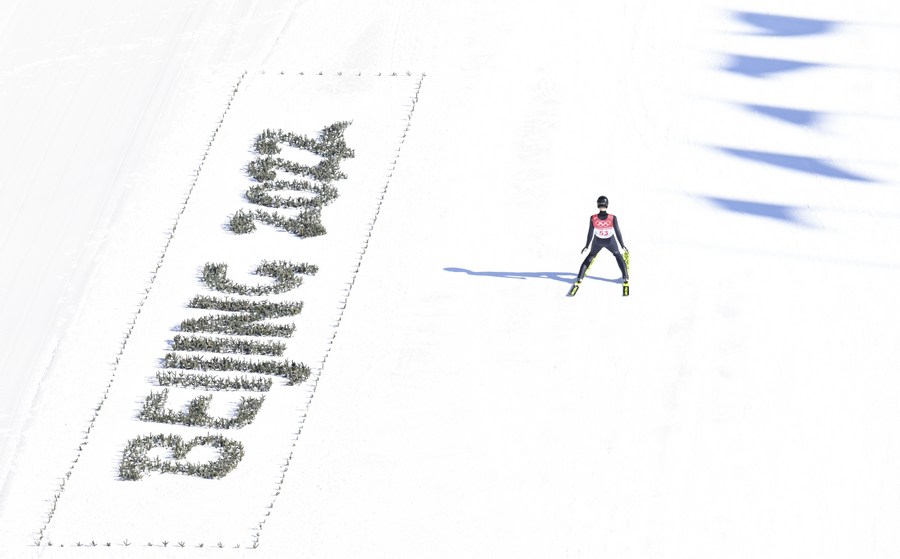“I’m a ski track designer, not an expert on snowmaking, but I want to say that the conditions of snow along the alpine ski tracks here are perfect,” said Bernhard Russi, chairman of the International Ski Federation’s Alpine Committee.
“When I first visited Yanqing in 2014, I saw literally nothing here, but now, when I look down from the mountain, I see snow everywhere and the view is beautiful,” Russi, who has designed tracks for alpine ski competitions for nine consecutive Winter Olympics, told a press conference held on Feb. 5 in Beijing.

Karl Geiger of Germany competes during the Ski Jumping men's normal hill individual qualification at the National Alpine Skiing Centre in Yanqing District, Beijing, capital of China, Feb. 5, 2022. (Xinhua/Jiang Kehong)
Because different snow-related competitions have varied requirements for the quality of snow, artificial snow becomes crucial for building high-quality ski tracks. As a matter of fact, artificial snowmaking technology was adopted several decades ago and multiple Olympic Winter Games have produced enormous quantities of artificial snow when preparing snow for the events. The Beijing Winter Olympic Games is no different.
“The difference is that we pay more attention to the concept of recycling in snowmaking,” said Wei Qinghua, Chinese director of the snowmaking team for Beijing 2022. Wei is also a venue operation manager at the Guyangshu venue cluster located in Beijing 2022’s Zhangjiakou competition zone in north China’s Hebei Province.
Wei explained that producing artificial snow is a process of turning water into snow, and in order to prepare water for this purpose, they would first store melted snow water collected from the ski resort into storing facilities and then filter the water so that it could be used again for snowmaking. Because no additives have been used throughout the snowmaking process, the melted snow water can later serve as a source for landscape greening and irrigation.
Wei explained that a more direct way to build ski tracks by using as little water as possible is to collect the snow before the winter season ends, store it during the summer season, and then directly reuse it upon the arrival of the winter season the next year.
Russi said that it has been a common practice of storing snow for building ski tracks in Europe.
Thanks to a project dedicated to the research and application of technologies for preparing snow for competition purposes under the country’s efforts to offer technological support for Beijing 2022, Chinese scientific research teams have already developed relevant technology regarding snow storing and design and manufacturing of snow storing facilities.
During a test activity on snow storing held in 2017, a scientific research team under the Chinese Academy of Sciences helped a ski resort in Yanqing district of Beijing in storing about 60 percent of the snow collected from the previous winter season.



